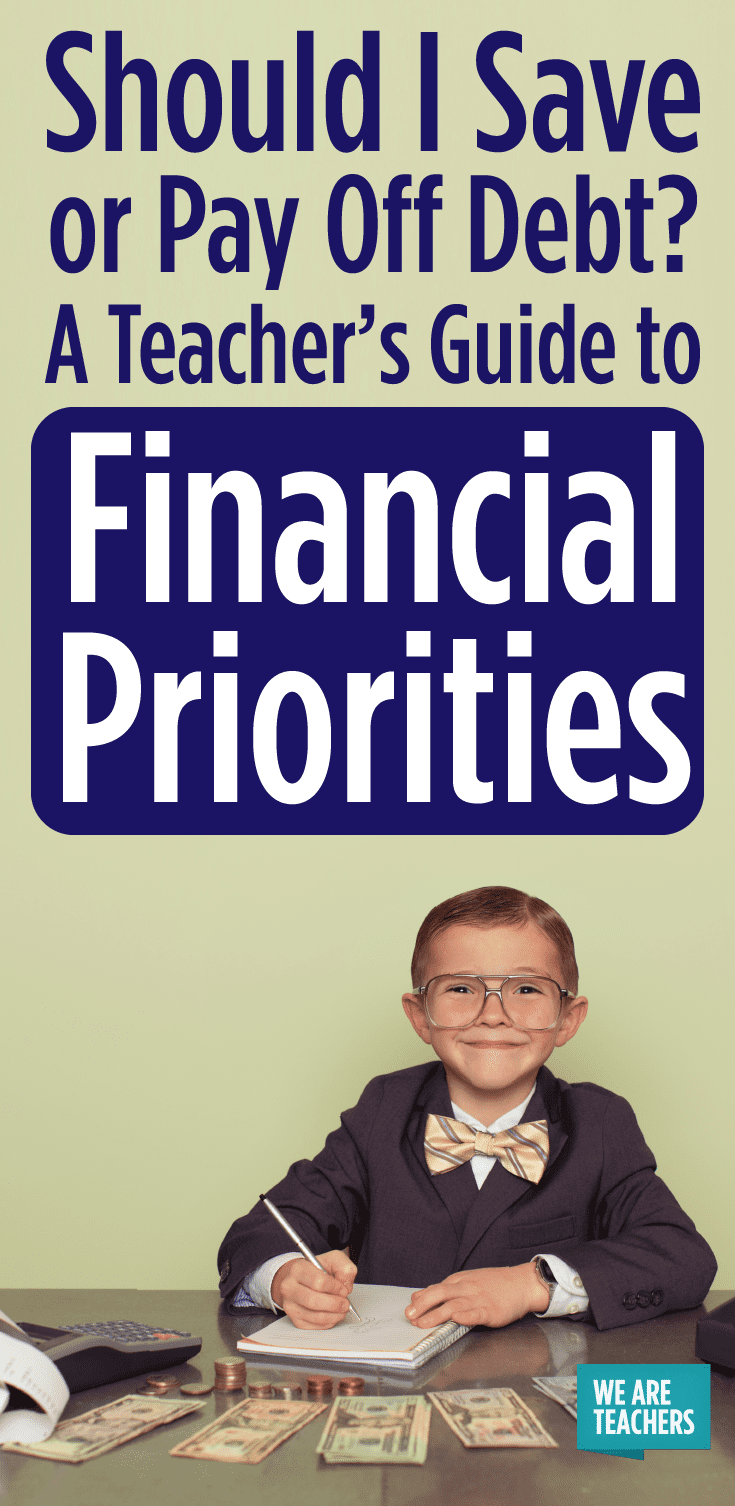Should I save or pay off debt? As I work with clients on setting financial priorities, this is the number one question they ask me.
My clients are concerned about their future savings amounts. Like them, if you don’t get started saving for your retirement, every year you wait to save can be thousands left on the table. Alternatively, if you only save for retirement, your debt can hang around with you and it won’t go away.
There is a method of tackling these two priorities that will ensure the debt disappears quickly and you will be able to add to your retirement savings. (For those of you aware of Dave Ramsey’s Baby Steps, these will look familiar):
Step 1: Set aside one month of living expenses, in cash.
Understand what it takes for you to live for a month, after you have paid taxes. (Asked another way—if you didn’t save anything, what amount would you need for living expenses each month?) Then, while paying minimum payments on your debts, put this amount into a savings account.
Step 2: List your debts, smallest to largest balance, and then pay them off in that order.
This is where people try to get fancy and bring complicated math into the situation. “Which is the highest interest rate, what rewards do I get with one card versus another?” It doesn’t need to be hard, and this is where you need to see results fast. This step can take a long time, depending on how much debt you have. Seeing the smallest debts disappear can pump you up. (It should be noted that this includes all debts other than your mortgage.)
By paying minimum payments on every debt, and then putting every penny you can find onto your smallest debt, you should see it disappear quickly. After it has been paid off, you take the money you would have been paying on the smallest debt, and pay it towards your newer smallest debt. Continue this process until all your debts are gone. This method is called a “debt snowball.”
There is another version which pays debts off with the highest interest rate first. While not wrong, finances are so much more about psychology and behavior than numbers. If they weren’t, much of this debt wouldn’t be around. By seeing your debt disappear quickly, the “go get ‘em” mentality is charged up and you’ll be more likely to stick with the program.
Step 3: Boost your savings to a “sleep-easy” amount.
Usually, one month of expenses in savings isn’t enough for everyone to feel comfortable. For my wife and I, we assumed the worst, and planned as though both of us could lose our job at the same time. We figured out what it would cost to live for six months, and then saved that amount.
It took a long time! This amount allows both of us to sleep at night. For you it may be a smaller or larger amount. It is trial and error with this number. Save until you feel comfortable.
It should be noted that steps 1–3 are the foundation of a financial plan and need to be in place before long-term investing can take place. If you don’t have adequate savings in place and things go wrong, you’ll be borrowing or withdrawing from long-term investments—or building more debt—to pay off these things.
The length of time it takes people to complete steps 2 and 3 varies depending on debt and income levels, as well as the lifestyle you want to lead. By sacrificing your lifestyle for a short period of time, you’ll be able to pay off your debt, save an Emergency Fund, and then get back to living life the way you were before.
This savings amount needs to be accessible, but not too easily. For example, try and find an account that will only let you make withdrawals through a checkbook.
Step 4: Start saving for retirement.
When you get to this point, you can be anywhere from six months to two years removed from step 1. When building a plan for clients, I typically don’t want them to hang onto debt for longer than 24 months, as it does delay saving for too long. If steps 1-3 takes longer than two years, then I suggest they pick up additional work or sell some of their unneeded belongings to shorten that timeframe.
When you have the foundation of being debt free (except the mortgage) and have a healthy amount of cash in the bank, it becomes a lot easier to focus on saving for the future. By having a laser focus on one thing at a time, it can help accomplish things in a quicker timeframe.

